Mastering Sets and Reps Full Body Workout Essentials

Unlocking the Secrets of Full Body Workout Sets and Reps
Understanding the Basics
In the realm of fitness, mastering the intricacies of sets and reps is crucial for maximizing the effectiveness of your workouts. When it comes to full body workouts, understanding how to structure sets and reps is particularly important. Let’s delve into the basics to unlock the secrets of full body workout sets and reps.
Defining Sets and Reps
Before diving into the details, it’s essential to understand what sets and reps actually mean. A set refers to a group of consecutive repetitions of an exercise, while a rep, or repetition, is a single execution of the exercise. For example, if you perform 10 push-ups in a row before taking a break, you’ve completed one set of 10 reps.
The Importance of Repetition Range
One of the key factors to consider when planning full body workout sets and reps is the repetition range. Different repetition ranges elicit different physiological responses in the body, targeting various aspects of muscular strength, endurance, and hypertrophy. For example, lower rep ranges (typically 1-5 reps per set) focus on building maximal strength, while higher rep ranges (usually 12-15 reps per set) prioritize muscular endurance and hypertrophy.
Choosing the Right Repetition Range
When designing your full body workout routine, it’s crucial to select the appropriate repetition range based on your individual goals and fitness level. If your primary objective is to increase strength, incorporating lower rep ranges and heavier weights into your routine is key. On the other hand, if you’re aiming to build muscle size and endurance, higher rep ranges with moderate weights may be more suitable.
Structuring Sets for Success
In addition to considering repetition range, the number of sets you perform for each exercise also plays a significant role in your workout’s effectiveness. Generally, performing multiple sets of an exercise allows you to accumulate enough volume to stimulate muscle growth and adaptation. However, the optimal number of sets can vary depending on factors such as exercise selection, intensity, and individual recovery capacity.
Balancing Volume and Intensity
Finding the right balance between volume (the total amount of work performed) and intensity (the level of effort or resistance) is essential for maximizing the effectiveness of your full body workout sets and reps. While higher volume workouts with more sets and reps can promote muscle hypertrophy and endurance, they also require adequate recovery time. Conversely, higher intensity workouts with heavier weights and lower reps are more taxing on the central nervous system but can lead to greater strength gains.
Periodization and Progression
To ensure continued progress and prevent plateaus, it’s essential to incorporate periodization and progression into your full body workout routine. Periodization involves systematically varying training variables such as intensity, volume, and exercise selection over time to stimulate continual adaptation and prevent overtraining. Progression, on the other hand, involves gradually increasing the difficulty of your workouts by manipulating factors such as weight, reps, and sets as your strength and fitness levels improve.
Listening
Ultimate Full Body Training Plan for Total Fitness
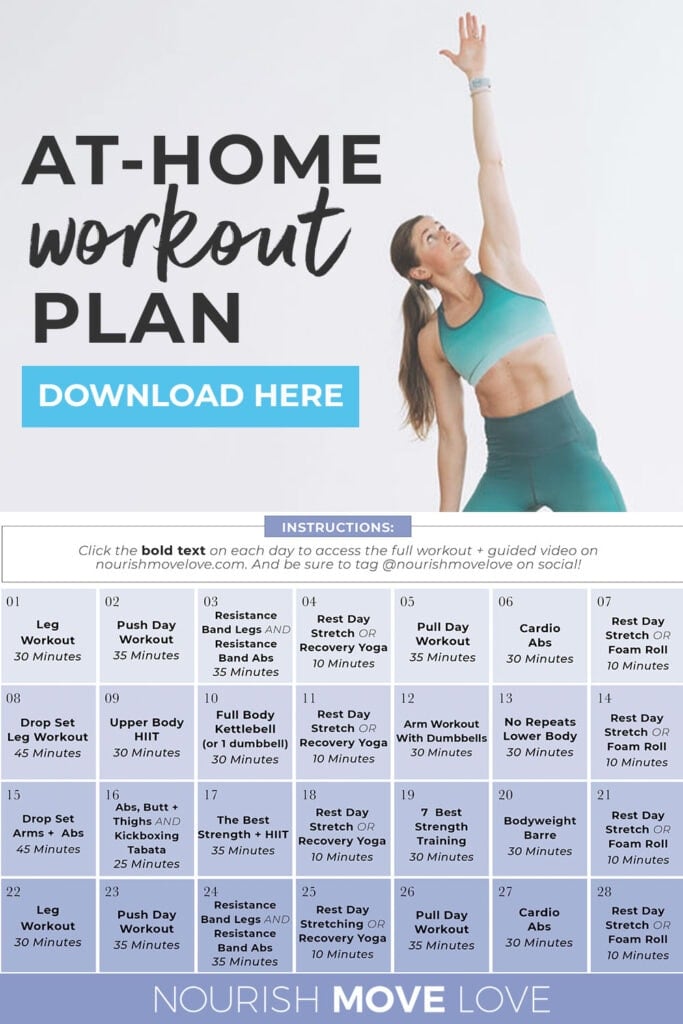
Introduction
Embarking on a full body workout training plan is a journey that promises comprehensive fitness gains. With a strategic approach to targeting all major muscle groups, individuals can unlock their potential and achieve remarkable results. Let’s explore the ins and outs of a full body training regimen and discover how it can elevate your fitness to new heights.
Understanding Full Body Training Plans
At the heart of a full body training plan lies the concept of engaging multiple muscle groups within a single session. Unlike split routines that isolate specific muscles on different days, a full body plan incorporates exercises for the upper body, lower body, and core in each workout. This holistic approach ensures balanced muscle development and maximizes calorie burn during training sessions.
The Benefits of Full Body Training
One of the primary advantages of a full body training plan is its efficiency. By targeting all major muscle groups in each session, individuals can make the most of their time in the gym. Additionally, the metabolic demand placed on the body during full body workouts can lead to increased calorie expenditure and enhanced fat loss. Moreover, engaging multiple muscle groups simultaneously can stimulate the release of growth hormone, which is crucial for muscle growth and repair.
Customizing Your Training Plan
The beauty of a full body training plan lies in its versatility. Whether you’re a beginner or a seasoned athlete, you can tailor the plan to suit your fitness level and goals. Beginners may start with lighter weights and focus on mastering proper form, while advanced lifters can incorporate heavier loads and advanced techniques to challenge themselves further. Additionally, varying the intensity, volume, and frequency of your workouts can prevent plateaus and keep your body guessing.
Exercise Selection and Progression
Central to the success of any full body training plan is the selection of exercises and their progression over time. Compound movements such as squats, deadlifts, bench presses, and rows should form the foundation of your routine, as they recruit multiple muscle groups and promote functional strength. As you become stronger and more proficient, you can gradually increase the weight, reps, or sets to continue challenging your muscles and stimulating growth.
Nutrition and Recovery
In addition to regular exercise, proper nutrition and adequate recovery are essential components of any successful full body training plan. Consuming a balanced diet rich in lean protein, complex carbohydrates, and healthy fats supports muscle growth and repair, while staying hydrated helps maintain optimal performance during workouts. Additionally, prioritizing rest and recovery allows the body to recuperate from intense training sessions and adapt to the demands of full body workouts.
Consistency and Patience
Achieving success with a full body training plan requires consistency, dedication, and patience. Results are not achieved overnight, but with perseverance and determination, you can make significant progress towards your goals. By adhering to a regular exercise routine, fueling your body with nutritious foods, and prioritizing rest and recovery, you can unlock your full potential and achieve the fitness level
Full Body Conditioning sans Squats Tips and Tricks

Squat-Free Full Body Routine for Home Workouts
Reimagining Your Workout Routine
When it comes to full body workouts, squats are often considered a staple exercise. However, for various reasons, you may want to exclude squats from your routine. Whether you’re recovering from an injury, have limited mobility, or simply prefer alternative exercises, a squat-free full body routine can still deliver exceptional results.
Understanding the Impact of Squats
Squats are renowned for their ability to target multiple muscle groups simultaneously, making them a popular choice for strength and muscle building. However, squats can also place significant stress on the knees, hips, and lower back, leading to discomfort or injury for some individuals. By eliminating squats, you can reduce the risk of strain and focus on alternative movements that suit your body’s needs.
Exploring Alternative Exercises
The key to a successful squat-free full body routine lies in finding suitable alternatives that engage similar muscle groups without compromising safety or effectiveness. Lunges, step-ups, and leg presses are excellent substitutes for targeting the lower body, while exercises like push-ups, rows, and overhead presses can effectively work the upper body. Incorporating a variety of movements ensures comprehensive muscle engagement and balanced development.
Targeting Lower Body Muscles
Without squats, it’s essential to incorporate alternative exercises that effectively target the muscles of the lower body. Lunges, in particular, are a versatile option that engages the quadriceps, hamstrings, glutes, and calves while improving balance and stability. Step-ups and leg presses also provide excellent opportunities to strengthen the lower body without the need for squatting motions.
Engaging the Upper Body
While squats primarily target the lower body, they also engage the core and upper body muscles to stabilize the movement. To replicate this engagement without squats, focus on compound exercises that work multiple muscle groups simultaneously. Push-ups, pull-ups, rows, and overhead presses are all effective options for building upper body strength and muscle definition.
Incorporating Core Work
A strong core is essential for overall stability and functional movement, regardless of whether squats are included in your routine. Planks, Russian twists, mountain climbers, and bicycle crunches are all effective core exercises that can be incorporated into a squat-free full body routine. By strengthening the core, you enhance performance in other exercises and reduce the risk of injury.
Maintaining Intensity and Progression
One concern when eliminating squats from your routine is maintaining intensity and progression in your workouts. To ensure continued progress, focus on increasing the resistance, volume, or intensity of your exercises over time. This could involve adding weight, performing more repetitions, or incorporating advanced variations of each movement to keep your muscles challenged and stimulated.
Listening to Your Body
As with any workout routine, it’s essential to listen to your body and adjust your exercises accordingly. If you experience discomfort or pain during any movement, modify the exercise or choose a different variation that feels more comfortable. Remember, the goal is to challenge yourself safely and effectively while respecting your body’s limitations.
Balancing Strength and Flexibility
In addition to
Elevate Your Fitness with T Nation’s Full Body Workouts

The Full Body Workout Revolution
Introduction
In the realm of fitness, the quest for the ultimate workout regimen that targets every muscle group effectively has been an ongoing pursuit. Today, we delve into the realm of full body workouts, exploring their significance, benefits, and how they’ve revolutionized the fitness landscape.
Understanding Full Body Workouts
Before we dive into the specifics, let’s understand what full body workouts entail. Unlike isolated exercises that focus on one muscle group at a time, full body workouts engage multiple muscle groups simultaneously. This comprehensive approach not only saves time but also ensures a balanced development of the entire body.
The Benefits of Full Body Workouts
One of the primary advantages of full body workouts is their efficiency. By engaging multiple muscle groups in a single session, you can maximize calorie burn and optimize your workout time. Moreover, full body workouts promote functional strength, enhancing your ability to perform everyday tasks with ease.
Targeting Every Muscle Group
A key aspect of full body workouts is their ability to target every muscle group effectively. From the larger muscles like the quadriceps and latissimus dorsi to smaller stabilizing muscles, each component of the body is engaged through compound movements. This holistic approach ensures balanced muscle development and reduces the risk of imbalances or injuries.
Versatility in Training
Another notable aspect of full body workouts is their versatility. Whether you’re a beginner looking to establish a solid fitness foundation or an experienced athlete seeking to switch up your routine, full body workouts offer endless possibilities. From bodyweight exercises to incorporating resistance training, the flexibility of full body workouts allows for customization based on individual goals and preferences.
Progressive Overload and Adaptation
Incorporating progressive overload is crucial for continual progress in any workout regimen, and full body workouts are no exception. By gradually increasing the intensity, volume, or complexity of exercises, you challenge your muscles to adapt and grow stronger over time. This principle of adaptation is fundamental for achieving long-term fitness goals and preventing plateaus.
Balancing Intensity and Recovery
While the intensity of full body workouts is undoubtedly beneficial, it’s essential to strike a balance with adequate recovery. Overtraining can lead to fatigue, burnout, and increased risk of injury. Incorporating rest days, proper nutrition, and sufficient sleep are integral components of any effective full body workout program.
Sample Full Body Workout Routine
To provide a practical illustration, let’s outline a sample full body workout routine:
- Warm-up: Dynamic stretches and light cardio for 5-10 minutes.
- Squats: 3 sets x 10 reps
- Push-ups: 3 sets x 12 reps
- Bent-over rows: 3 sets x 10 reps
- Lunges: 3 sets x 12 reps (each leg)
- Plank: 3 sets x 30 seconds
- Russian twists: 3 sets x 15 reps (each side)
- Cool-down: Static stretches targeting major muscle groups for 5-10 minutes.
Conclusion
Full body workouts represent a paradigm shift in the realm of fitness, offering a holistic approach to strength, endurance, and overall well-being. By targeting multiple muscle groups in a single session, these
Enhance Your Running Routine with Full Body Workouts
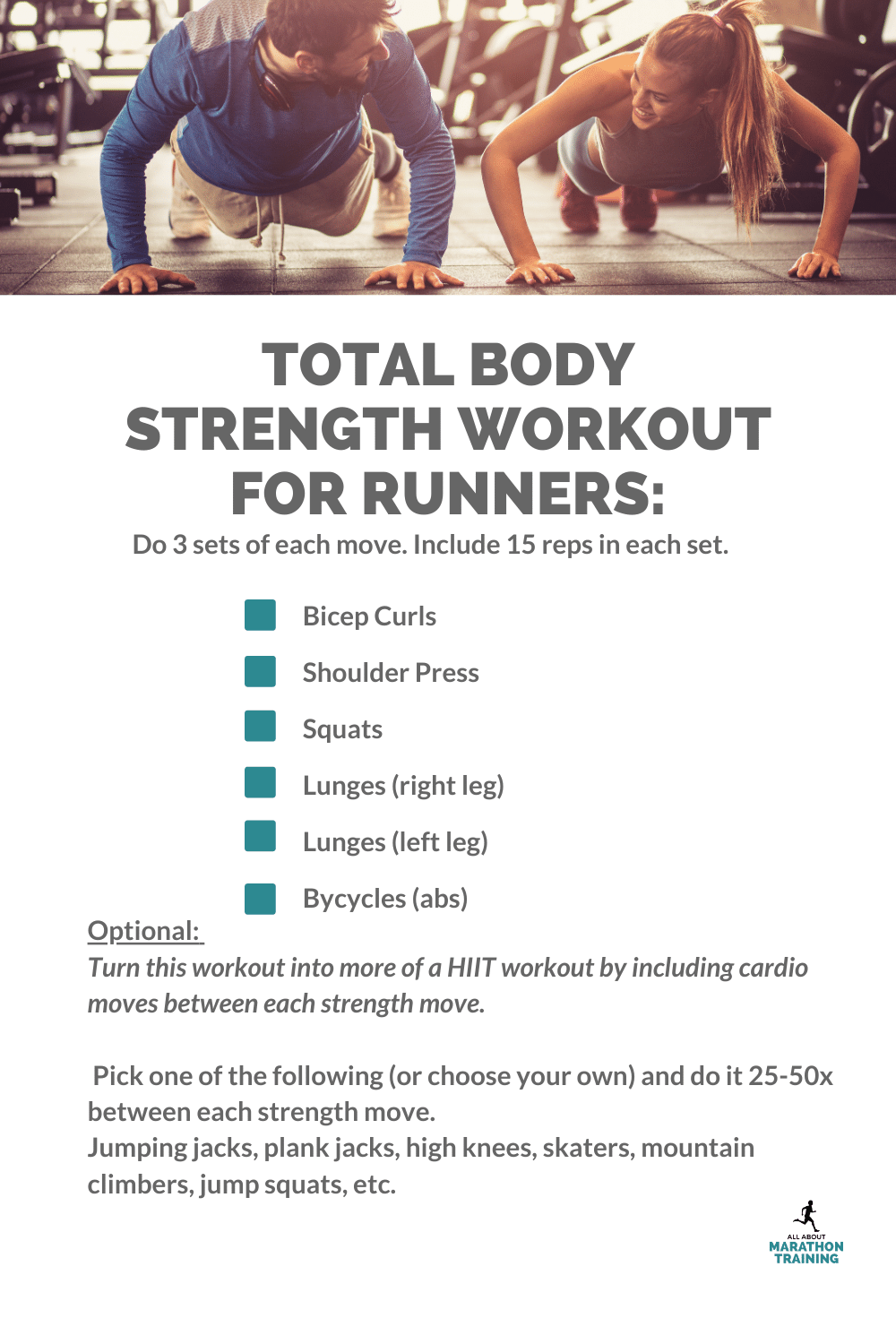
Elevate Your Running Game with Full Body Workouts
Unleash Your Potential: The Importance of Full Body Workouts
When it comes to improving your running performance, it’s easy to focus solely on logging miles and perfecting your form. However, one often overlooked aspect of training is incorporating full body workouts into your routine. These workouts target multiple muscle groups simultaneously, helping to build strength, endurance, and stability – all of which are crucial for becoming a stronger, more efficient runner.
Strengthen Every Stride: How Full Body Workouts Benefit Runners
One of the key benefits of full body workouts for runners is their ability to strengthen the muscles used during running. While running primarily engages the lower body, incorporating exercises that target the upper body, core, and stabilizing muscles helps to create a more balanced and resilient physique. This can lead to improved running form, reduced risk of injury, and increased overall performance on the road or trail.
Maximize Your Potential: Full Body Workouts for Enhanced Performance
In addition to strengthening muscles, full body workouts can also help runners maximize their potential by improving overall athleticism. These workouts often incorporate functional movements that mimic the actions performed during running, such as squats, lunges, and plyometrics. By training the body to move more efficiently and explosively, runners can increase their speed, agility, and endurance – ultimately leading to faster race times and greater confidence on the run.
Achieve Balance and Stability: The Role of Full Body Workouts
Balance and stability are essential components of running that are often overlooked. However, they play a critical role in maintaining proper form and preventing injury, especially when navigating uneven terrain or changing directions quickly. Full body workouts that incorporate exercises like single-leg squats, balance drills, and core strengthening movements can help improve proprioception and coordination, leading to greater stability and control while running.
Fuel Your Runs: How Full Body Workouts Enhance Endurance
Endurance is a cornerstone of successful running, whether you’re training for a 5K or a marathon. Incorporating full body workouts into your training regimen can help enhance endurance by increasing cardiovascular fitness and muscular endurance. By pushing your body to perform high-intensity exercises for extended periods, you’ll build the stamina needed to sustain longer runs at a faster pace – allowing you to go the distance with confidence.
Optimal Training: Integrating Full Body Workouts into Your Routine
Now that you understand the benefits of full body workouts for runners, the next step is integrating them into your training routine effectively. Aim to incorporate these workouts 2-3 times per week, alternating with your running workouts to allow for adequate rest and recovery. Focus on compound movements that target multiple muscle groups simultaneously, and gradually increase the intensity and volume over time to continue challenging your body and stimulating adaptation.
Fuel for Your Running Journey: Nutrition Tips for Runners
In addition to training smart, it’s essential to fuel your body properly to support your running goals. Make sure to consume a balanced diet rich in lean
Sculpt Your Body Complete Bodyweight Workout Routine
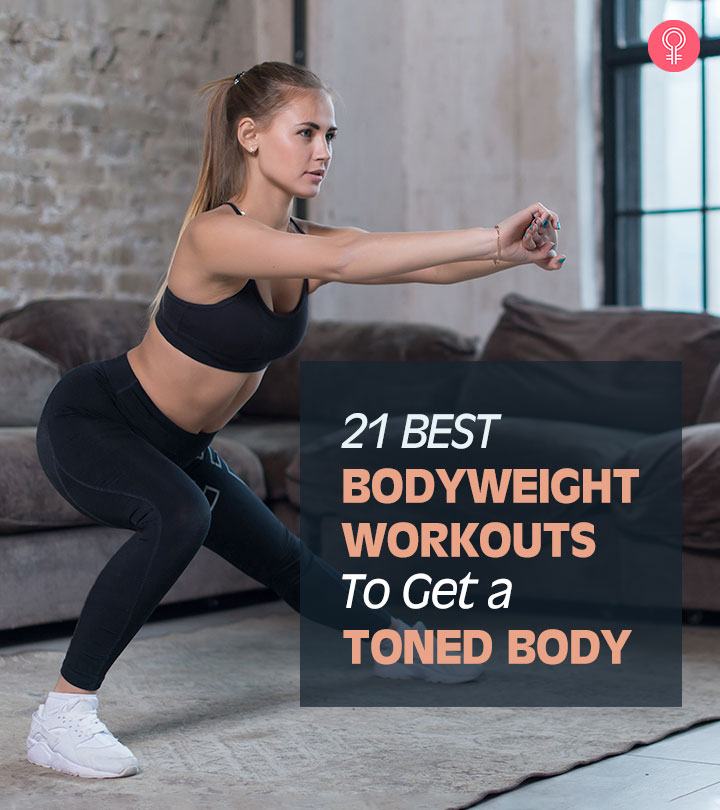
Ultimate Bodyweight Workout for Full Body Fitness
Introduction: Embracing the Power of Bodyweight Exercises
In the realm of fitness, one often thinks of heavy weights and complex gym equipment. However, there exists a highly effective alternative: bodyweight exercises. In this article, we’ll explore the ultimate bodyweight workout, demonstrating how it can sculpt your physique, boost strength, and enhance overall fitness without the need for any weights.
Starting Strong: Understanding Bodyweight Training
Bodyweight training revolves around using your own body weight as resistance to build strength, endurance, and flexibility. Unlike traditional weightlifting, bodyweight exercises are highly accessible and can be performed anywhere, making them ideal for individuals with limited access to gym equipment or those preferring home workouts.
Targeting Every Muscle: The Full Body Approach
One of the most remarkable aspects of bodyweight workouts is their ability to target every major muscle group in the body. From squats and lunges for the lower body to push-ups and dips for the upper body, and planks and burpees for the core, there’s a bodyweight exercise for every muscle group, ensuring a comprehensive full body workout.
Form and Technique: The Key to Success
While bodyweight exercises may seem straightforward, proper form and technique are essential for maximizing their effectiveness and preventing injury. Focus on maintaining proper alignment, engaging the target muscles, and executing each movement with control and precision. Paying attention to form ensures optimal results and reduces the risk of strain or discomfort.
Customization and Adaptation: Tailoring the Workout to You
One of the greatest benefits of bodyweight training is its versatility and adaptability. Whether you’re a beginner or a seasoned athlete, bodyweight exercises can be modified to suit your fitness level and goals. Adjust the number of repetitions, vary the tempo of each exercise, or incorporate progressions and regressions to challenge yourself and keep workouts fresh and exciting.
Benefits Beyond Muscle Building: The Holistic Approach
Beyond building muscle and strength, bodyweight workouts offer a range of additional benefits. They improve cardiovascular health, enhance flexibility and mobility, and promote functional movement patterns that translate to real-life activities. Moreover, bodyweight exercises can be an effective tool for weight loss and body composition improvement when combined with a balanced diet and lifestyle.
Minimal Equipment, Maximum Results: The Convenience Factor
One of the most appealing aspects of bodyweight training is its simplicity and accessibility. All you need is your body and a small space to perform a challenging and effective workout. Whether you’re at home, in a park, or traveling, you can squeeze in a full body workout with minimal equipment, making consistency and adherence to your fitness routine easier than ever.
Progression and Growth: Moving Forward
As with any fitness regimen, progression is key to continued growth and improvement in bodyweight training. Gradually increase the difficulty of exercises by adding repetitions, decreasing rest periods, or incorporating more challenging variations. Tracking your progress and celebrating your achievements along the way will keep you motivated and committed to your fitness journey.
Nutrition and Recovery: Supporting Your Goals
Optimize Your Fitness 4-Day Full Body Workout Plan
Introduction
Embarking on a fitness journey often feels daunting, especially when trying to figure out the most effective workout routine. In the realm of full-body workouts, committing to a plan that spans four days a week might seem excessive to some, but the benefits are vast and undeniable.
Maximizing Efficiency
At first glance, dedicating four days a week to a full-body workout plan might sound like a significant time commitment. However, this frequency allows for a more balanced distribution of muscle groups targeted each session. Instead of overloading specific areas, you’re spreading the workload across multiple days, optimizing efficiency and preventing burnout.
Balancing Intensity and Recovery
One of the key advantages of a four-day full-body workout plan is the ability to strike a balance between intensity and recovery. By spacing out your sessions throughout the week, you give your muscles ample time to recuperate and repair between workouts. This not only reduces the risk of injury but also ensures that you can maintain consistent performance levels throughout the week.
Targeting Different Muscle Groups
With a four-day full-body workout plan, you have the opportunity to target different muscle groups each session. This allows for greater variety in your workouts and ensures comprehensive muscle development. By alternating between upper body, lower body, and core-focused exercises, you can address all areas of your physique and achieve a balanced, symmetrical look.
Progressive Overload and Adaptation
One of the fundamental principles of fitness is progressive overload – gradually increasing the demands placed on your muscles over time. With a four-day full-body workout plan, you have more opportunities to incorporate progressive overload into your routine. Whether it’s increasing the weight, reps, or sets of your exercises, challenging your muscles in this way promotes growth, strength gains, and continual adaptation.
Efficient Use of Time
While committing to four workouts a week may seem like a significant time investment, it’s important to consider the efficiency of these sessions. With a well-structured full-body workout plan, you can maximize your time in the gym, ensuring that each exercise serves a purpose and contributes to your overall fitness goals. By eliminating excess fluff and focusing on compound movements, you can make the most out of every workout.
Customization and Flexibility
One of the beauties of a four-day full-body workout plan is its flexibility and adaptability. Whether you’re a seasoned athlete or a fitness novice, this type of routine can be tailored to suit your individual needs and preferences. From adjusting the intensity and volume of your workouts to incorporating specific exercises to target weak areas, you have the freedom to customize your plan and make it your own.
Holistic Approach to Fitness
By dedicating four days a week to full-body workouts, you’re adopting a holistic approach to fitness that goes beyond aesthetics. While sculpting a lean, toned physique is certainly a common goal, the benefits extend far beyond appearance alone. A well-rounded fitness routine improves strength, endurance, flexibility, and overall health, setting the foundation for a vibrant, active lifestyle.
Consistency and
Ultimate Upper Body Calisthenics Routine for Strength
Unlocking the Power of Full Upper Body Calisthenics Workouts
Understanding Calisthenics: The Basics
Calisthenics, often referred to as bodyweight training, is a form of exercise that utilizes one’s own body weight for resistance. Unlike traditional weightlifting, which requires equipment like dumbbells or barbells, calisthenics relies on movements such as push-ups, pull-ups, dips, and bodyweight squats to build strength and muscle mass. This makes it an accessible and cost-effective option for individuals looking to improve their fitness levels without the need for a gym membership or specialized equipment.
Targeting the Upper Body: Why It Matters
The upper body plays a crucial role in overall strength and functionality. A strong upper body not only enhances physical appearance but also supports daily activities such as lifting, carrying, and pushing. By targeting muscles in the chest, shoulders, back, and arms through calisthenics exercises, individuals can improve posture, increase stability, and reduce the risk of injury during everyday movements. Additionally, developing upper body strength is essential for mastering more advanced calisthenics skills and movements.
The Benefits of Full Upper Body Calisthenics Workouts
Full upper body calisthenics workouts offer a myriad of benefits for individuals of all fitness levels. By engaging multiple muscle groups simultaneously, these workouts provide a comprehensive and efficient way to build strength, improve endurance, and increase flexibility. Moreover, calisthenics exercises can be easily modified to suit individual fitness goals and abilities, making them suitable for beginners and seasoned athletes alike. From enhancing muscle definition to boosting cardiovascular health, the benefits of incorporating full upper body calisthenics into your fitness routine are undeniable.
Designing an Effective Workout Routine
Designing an effective full upper body calisthenics workout routine requires careful consideration of exercise selection, volume, intensity, and progression. A well-rounded routine should incorporate a variety of upper body exercises targeting different muscle groups, such as push-ups for the chest, pull-ups for the back, and dips for the triceps. Additionally, integrating variations and progressions of these exercises, such as incline push-ups or assisted pull-ups, allows for continuous challenge and growth. It’s essential to strike a balance between pushing your limits and allowing for adequate rest and recovery to prevent overtraining and maximize results.
Key Upper Body Calisthenics Exercises
Several key exercises form the foundation of a full upper body calisthenics workout. Push-ups are a staple exercise that targets the chest, shoulders, and triceps while also engaging the core for stability. Pull-ups are another essential movement for developing upper body strength, particularly in the back and biceps. Dips effectively target the triceps, shoulders, and chest, providing a challenging upper body workout. Incorporating variations of these exercises, such as wide-grip pull-ups or diamond push-ups, can help target different muscle groups and prevent plateauing.
Progression and Adaptation
Progressive overload is essential for continuous improvement in calisthenics training. As you become stronger and more proficient in basic exercises, it’s essential to progressively increase the difficulty or intensity to stimulate further gains. This can be achieved by increasing the number of repetitions, decreasing rest periods between sets, or advancing to
Full Body Overhaul Achieve Ultimate Transformation
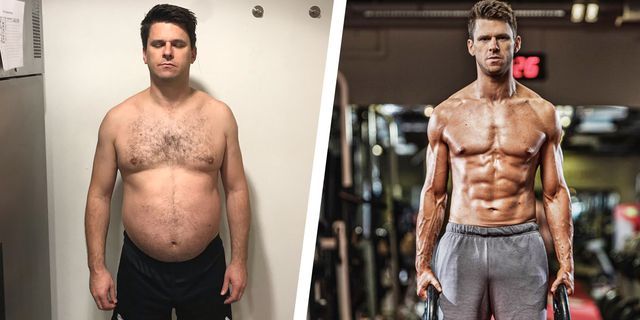
Introduction
Embarking on a journey to transform your body is more than just a physical endeavor—it’s a commitment to embracing change, pushing boundaries, and achieving your fullest potential. In the realm of fitness, few undertakings are as comprehensive and rewarding as a full body workout transformation. Let’s delve into the intricacies of this transformative process and explore how it can revolutionize your fitness journey.
The Full Body Workout Paradigm: Beyond Isolation
Gone are the days when fitness enthusiasts focused solely on isolated muscle groups. The full body workout paradigm advocates for a holistic approach, targeting multiple muscle groups in each session. By engaging the entire body in a single workout, you not only maximize efficiency but also foster balance and symmetry—a crucial aspect of overall fitness.
Unlocking Strength and Endurance
One of the primary objectives of a full body workout transformation is to unlock your body’s full potential in terms of strength and endurance. Through strategic exercises that challenge both muscular strength and cardiovascular endurance, you gradually build resilience and stamina. This newfound strength empowers you to conquer physical obstacles and push past limitations, both in and out of the gym.
Sculpting Your Physique: From Flab to Fab
For many individuals, the desire to transform their physique serves as a powerful motivator. A full body workout regimen offers a comprehensive solution for sculpting your body and shedding excess fat. By incorporating a diverse array of exercises—from compound movements to high-intensity intervals—you effectively torch calories, tone muscles, and sculpt a leaner, more defined physique.
Embracing Change: The Mental Shift
While physical transformation is undoubtedly a key aspect of the journey, the mental shift that accompanies it is equally profound. Transforming your body requires discipline, dedication, and a willingness to embrace change. As you progress through your full body workout transformation, you’ll develop mental fortitude, resilience, and a newfound sense of confidence that extends far beyond the gym walls.
The Role of Nutrition: Fueling Your Transformation
No discussion of fitness transformation would be complete without addressing the critical role of nutrition. Fueling your body with the right nutrients is essential for supporting muscle growth, optimizing performance, and facilitating recovery. Whether you’re aiming to build muscle, lose weight, or improve overall health, adopting a balanced and nutritious diet is paramount to your success.
Overcoming Plateaus: The Key to Progress
In any fitness journey, plateaus are an inevitable challenge. However, with a full body workout transformation program, you’re equipped with the tools to overcome these hurdles and continue making progress. By incorporating progressive overload, periodization, and strategic variation into your workouts, you keep your body guessing and prevent stagnation, ensuring consistent gains over time.
Finding Balance: Holistic Fitness Approach
Achieving true transformation extends beyond the physical realm—it encompasses mental, emotional, and spiritual well-being as well. A holistic fitness approach emphasizes the interconnectedness of these elements, encouraging you to cultivate balance in all aspects of your life. Through mindfulness practices, stress management techniques, and self-care rituals, you nurture your overall health and enhance your capacity
Flexibility Unleashed Full Split Workout Essentials

Unlock Your Flexibility Potential with Full Split Workouts
Flexibility is a key component of overall fitness and athleticism. Whether you’re a dancer, yogi, martial artist, or simply someone looking to improve your mobility, achieving a full split is a significant milestone. In this article, we’ll explore how full split workouts can help you unlock your flexibility potential and take your training to the next level.
Understanding the Full Split Exercise
Before diving into the benefits of full split workouts, let’s first understand what the full split exercise entails. The full split, also known as the front split or center split, involves extending one leg forward and the other leg backward until both legs are fully stretched in opposite directions, forming a straight line. This exercise primarily targets the hamstrings, hip flexors, and groin muscles.
Enhancing Flexibility
One of the primary goals of full split workouts is to enhance flexibility. Regular practice of the full split exercise helps lengthen and stretch the muscles involved, gradually increasing your range of motion. Over time, this leads to improved flexibility not only in the legs but also in the hips and lower back, allowing you to move more freely and perform activities with greater ease.
Building Strength
While flexibility is a major focus of full split workouts, they also offer significant strength-building benefits. Holding the full split position requires strength and stability in the muscles surrounding the hips, pelvis, and core. By incorporating full split exercises into your routine, you’ll not only improve your flexibility but also develop greater strength and control in these muscle groups.
Improving Balance and Stability
Full split workouts can also help improve balance and stability. As you work to achieve and maintain the full split position, you’ll engage and strengthen the stabilizing muscles throughout your body. This not only enhances your ability to balance in the split position but also carries over to other activities, reducing your risk of injury and enhancing overall stability in movements.
Preventing Injury
In addition to improving flexibility, strength, and balance, full split workouts can also help prevent injuries. By increasing flexibility and mobility in the muscles and joints, you’ll reduce the risk of strains, sprains, and other common injuries, especially those related to physical activity and sports. Incorporating full split exercises into your routine can serve as a valuable form of injury prevention.
Enhancing Athletic Performance
For athletes, full split workouts can be particularly beneficial for enhancing athletic performance. Improved flexibility and range of motion translate to better performance in sports that require agility, speed, and coordination. Whether you’re a runner, a soccer player, or a gymnast, incorporating full split exercises into your training regimen can give you a competitive edge on the field or the mat.
Tailoring Your Workout Routine
When incorporating full split workouts into your routine, it’s important to tailor your approach to your individual fitness level and goals. Start gradually, focusing on proper form and technique to avoid injury. As you progress, gradually increase the intensity and duration of
